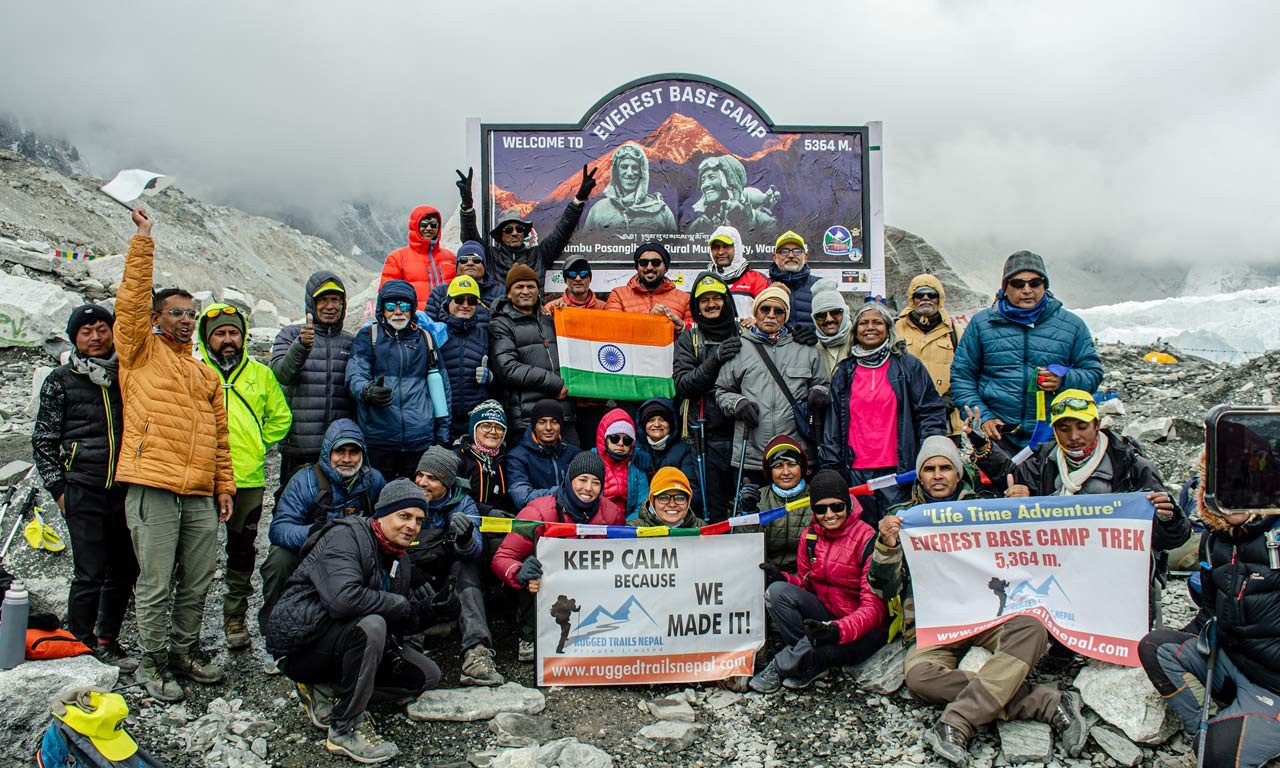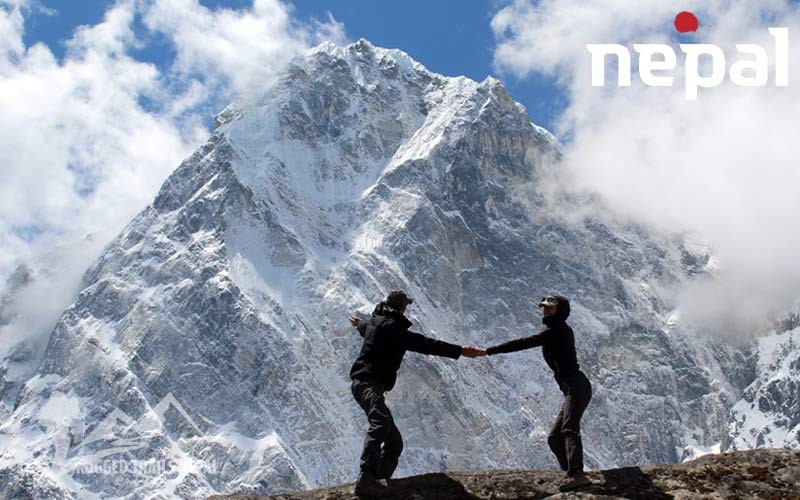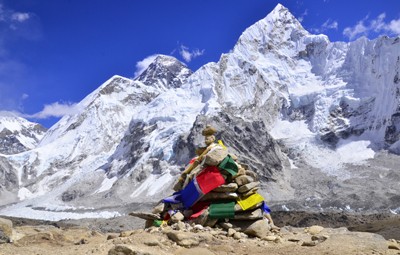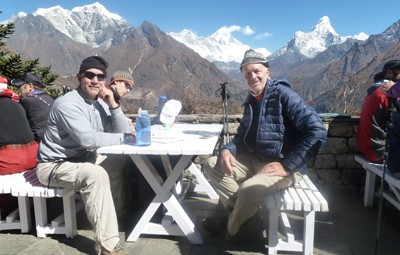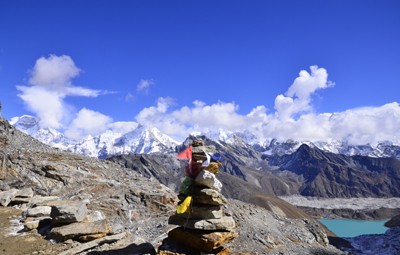The Everest Base Camp Trek is a world-famous trip that is very physically demanding but infinitely rewarding. For trekkers, backpackers, and outdoor enthusiasts around the world, the 16 days Everest Base Camp (EBC) Trek is the pinnacle of adventures. The once-in-a-lifetime journey takes you through the jaw-dropping Khumbu Valley, up to the base of the world’s tallest mountain, Mount Everest (8848 m). The natural highlights of the trek—the Himalayas, diverse lush forests, and the rare wildlife found in this alpine region—cannot be missed. Equally beautiful are the Sherpa culture and lifestyle. Sherpas are renowned for their climbing abilities as well as their genuine hospitality. Everest Base Camp 16 days trek itinerary plan is perfect for senior citizens and slow hikers, We have posted NEVER TOO OLD FOR EVEREST BASE CAMP (follow the link to learn more)
Everest Base Camp Trek Highlights.
The Cultural Tapestry of Kathmandu
Take some time to explore Kathmandu, the capital city of Nepal, before starting your walk. Visit ancient monuments such as the Boudhanath Stupa, one of the largest stupas in the world, and Swayambunath (Monkey Temple), a revered Buddhist stupa set on a mountaintop, to fully immerse yourself in the rich cultural tapestry. Discover the historic centre of Kathmandu, the old Durbar Squares, which are home to elaborate temples and palaces that represent the country's distinct fusion of Buddhism and Hinduism.
Take a thrilling flight to Lukla after discovering the cultural highlights of Kathmandu and soar through the Himalayas. Gaze out your window and see the Himalayas unfold, a magnificent prelude to the journey that lies ahead.
- Lukla Airport: The thrilling and heart-pounding landing at Lukla Airport, which is frequently regarded as one of the world's most dangerous airports, is the beginning of your experience. This small airport, tucked up amongst towering hills, will serve as your entry point to the Everest region.
- Sagarmatha National Park: Enter the wild of Sagarmatha National Park, a UNESCO World Heritage Site brimming with a wide variety of plants and animals, and explore this wildness. Watch out for endangered species like Himalayan tahr, musk deer, and perhaps the elusive snow leopard.
- Namche Bazaar: Namche Bazaar, as some people call this mini-thamel market regarded as the gateway to Everest, is where you will arrive. The sidewalks are lined with vibrant stores that provide a distinctive fusion of regional products and hiking necessities. Get used to the higher altitude and take in the region's diverse cultural offerings.
- Sherpa People Hospitality: The Sherpas, who are known for being hospitable and resilient, have lived in the Everest region for many generations. Discover their way of life, their strong bond with the mountains, and their fabled spirit of climbing.
- Monastery: Peace Among the Peaks: Tucked away on a hilltop with a view of the valley, Tengboche Monastery offers quiet and tranquility. Observe the Buddhist monks going about their everyday lives, take in the beautiful mandalas, and feel the peace that fills this hallowed space.
- Experience the magnificence of the Khumbu Glacier, the largest glacier in the Himalayas, up close. As you stand beside the Khumbu Icefall, a tangle of crevasses and towering ice structures, you can truly appreciate the power of nature.
- Panoramic Views: Kala Patthar and Nangkartshang Peak: Set out on a charming walk to reach Nangkartshang Peak (5,083 m) and Kala Patthar (5,555 m). Absolutely great panoramic views of Everest, Ama Dablam, Lhotse, Nuptse, Thamserku, Cho Oyu, and numerous other Himalayan ranges can be seen from these vantage locations. The majesty and sheer size of the surrounding peaks will humble you.
Everest Base Camp Trek Itinerary: 16 Days
- Day 1: Arrive in Kathmandu
- Day 2: Sightseeing around Kathmandu / Trek Preparation.
- Day 3: Kathmandu, Manthali, Lukla, and Phakding.
- Day 4: Phakding Namche Bazaar.
- Day 5: Acclimatization Day, Namche Bazaar.
- Day 6: Namche Bazaar - Tengboche
- Day 7: Tengboche Dingboche.
- Day 8: Acclimatization Day (Dingboche).
- Day 9: Dingboche Trek to Lobuche.
- Day 10: Lobuche - Gorak Shep, 5,164 M (16,942 ft) - Everest Base Camp, 5,380 M (17,600 ft) Gorak Shep.
- Day 11: Gorak Shep to Kala Patthar 5,545 M (18,192 ft) to Pheriche
- Day 12: Pheriche Trek to Khumjung Village.
- Day 13: Khumjung Trek to Monjo.
- Day 14: Monjo Trek to Lukla.
- Day 15: Fly back to Kathmandu from Lukla.
- Day 16: Final Departure
Everest Base Camp: A Difficult But Achievable Journey
Remain Encouraged Despite Your Age: It's not a passport number that will determine your success at Everest Base Camp, but rather your current fitness level. We have led successful groups of up to thirty people recently; some of them were as old as eighty! If you're dedicated and in good physical shape, this climb could become your Everest.
With a difficulty rating of five out of ten, the Everest Base Camp journey is frequently classified as fairly challenging. This indicates that while it's a challenge, many hikers with an adventurous spirit and strong physical health can complete it.
Depending on your own pace and how your body acclimatises to the altitude, the journey usually takes 10 to 14 days. The benefits are great even though you'll be hiking in an extremely high altitude (over 17,000 feet, or 5,364 meters), with some steep climbs and possibly difficult terrain.
Trekking Gear for Everest Base Camp: Get Ready for Adventure
The right trekking equipment is essential for the Everest Base Camp trek, regardless of the season you select. The majority of the necessary equipment is the same all year, while certain extras are needed for the winter. The essentials are broken down as follows:
- Backpack: It's imperative to have a sturdy, well-made rucksack with lots of storage and a sturdy frame. To guarantee comfort on extended hikes, look for one with a ventilated back panel and a padded hip belt. However, once you book with us, you will get waterproof duffle bags for the trek, which means you can arrive in Nepal with your suitcase and a small daypack bag.
- Boots for Hiking: Invest in a quality hiking boot with adequate ankle support that is waterproof and warm. It's essential to break them in completely before your walk to avoid blisters and guarantee comfort on uneven ground. If you are just thinking of buying the hiking boot for the Everest Trek, then start wearing it before starting the trek.
- Shirts with layers: Pack a range of insulating mid-layers for warmth, moisture-wicking base layers to keep you dry, and an outer layer that is wind- and waterproof-resistant to shield you from the weather. You can adjust to the shifting weather in the mountains using this layering strategy.
The Everest Base Camp Kala Patthar Trek is an opportunity to see the massive Himalayan peaks that cross 8000 meters: Mt. Everest, Lhotse, Ama Dablam, Makalu, and many more. The views of Khumbu Icefall and various glaciers are spectacular. Gorakshep (5380 m), a tiny mountain village, is the departure point to hike to base camp. Finally, we will have the opportunity to trek up to Kala Pattar (5545 m) for the best view of Mt. Everest.
Trek to Everest Base Camp: Accommodation and Dining Options
Along the route, you'll encounter the distinct appeal of teahouses and lodges on your walk to Everest Base Camp. This is what to expect:
Accommodation:
Standard lodges: Especially at lower altitudes, these offer straightforward yet cosy accommodations, with some offering the added convenience of private rooms with attached toilets. Some lodges may have dormitory-style rooms with common bathrooms at the busiest times of the year.
Options for upgrades: Do you want a little luxury? We can arrange opulent lodges with separate rooms, adjoining bathrooms, and heating blankets—a welcome comfort at higher elevations. Remember that even though the rooms aren't heated, ordinary lodges usually feature a heated eating area for visitors.
Food
Local Delights: Get ready to enjoy mouthwatering Tibetan and Nepalese food. A wide range of rice meals, lentils, fresh vegetables, and regional specialties such as chapati (flatbread), momos (steamed dumplings), Tibetan bread, thenduk soup (noodle soup), and occasionally meat dishes are to be expected.
Options in the West: Do you miss the comforts of home? In order to accommodate the tastes of hikers, several teahouses serve Western food such as spaghetti, pizza, and burgers.
Drinks:
Mineral Water: Purchase bottled water at guesthouses to stay hydrated during your walk. Bottles usually cost between $1 and $5 USD.
Pre-Trek Training Tips: Get Your Body Ready for Everest Base Camp
Build endurance: Before you hit the trail, focus on exercises that strengthen your legs. Activities like cycling, swimming, and even loaded hikes (don't worry, porters will carry your main backpack during the trek) are all excellent choices. Consider yoga and breathing exercises as well; these can improve your flexibility and lung capacity, both valuable assets on the trek. Yoga classes can provide guidance, but you can also practice independently.
Essential Tips for a Successful Everest Base Camp Trek:
- Pack Smart: Proper preparation is key! Ensure you have warm layers, sturdy hiking boots, and a good-quality reusable water bottle for the trek.
- Acclimatize wisely: Take your time ascending to higher elevations to reduce the risk of altitude sickness. Listen to your body and take breaks when needed. 16 Everest base camp trek itinerary allows 2 extra nights to acclimatize in the high elevation.
- Expert Guidance: Trekking with a qualified mountain guide is highly recommended. Their experience navigating the Himalayas can ensure a safe and enjoyable journey. (We, of course, have a team of expert Sherpa guides!)
- Stay Charged: Bring a power bank to keep your electronic devices powered throughout the trek.
- Trekking Poles: Consider using trekking poles to reduce strain on your knees, especially during descents.
- Respect the environment. Be a responsible trekker. Stay on designated trails and dispose of waste properly to minimize your impact on the local culture and environment.
Booking Your Everest Base Camp Trek
Ready to embark on your Everest Base Camp adventure? Booking is easy! Simply contact us via email, WhatsApp, or our website. Our friendly team will guide you through the entire process and answer any questions you may have. To secure your spot, a deposit is required. The remaining balance will be due before your expedition begins.
Hassle-Free Trekking
Everest Base Camp treks are highly sought-after, so booking well in advance is recommended. Let us handle all the logistics! Our team with extensive experience will manage permits, transportation, and accommodations, freeing you to concentrate on getting ready for an unforgettable adventure.
Nepal Everest Base Camp Trek Prices
The cost of the Everest Base Camp Trek varies depending on several factors, including group size, trek duration, and the level of service you choose. On average, the trek ranges from $1,500 to $3,000 per person. This typically includes all transportation, accommodations, meals, porters, guides, domestic flights to Lukla, Kathmandu hotel stays, and permits.
Standard 16-Day Trek:
The standard 16-day Everest Base Camp trek starts at $1,485 USD per person, based on a group size of two. We offer group discounts upon request.
Our Focus: Quality Over Quantity
While we don't prioritize large group sizes, we prioritize quality. Many companies offer similar trips, but we're confident ours is different. We focus on providing a personalized and exceptional experience.

